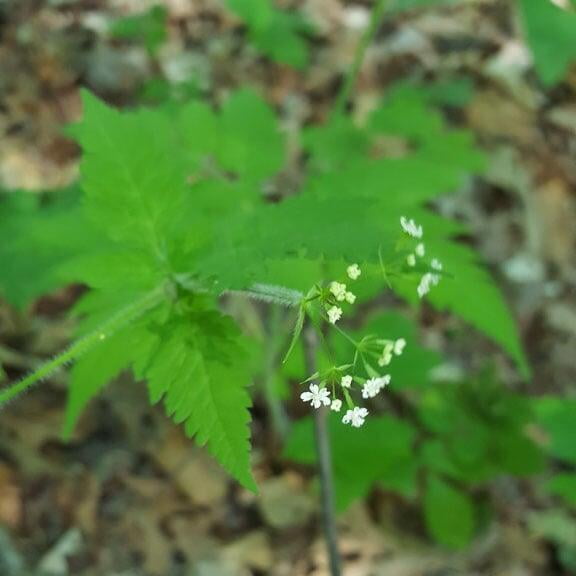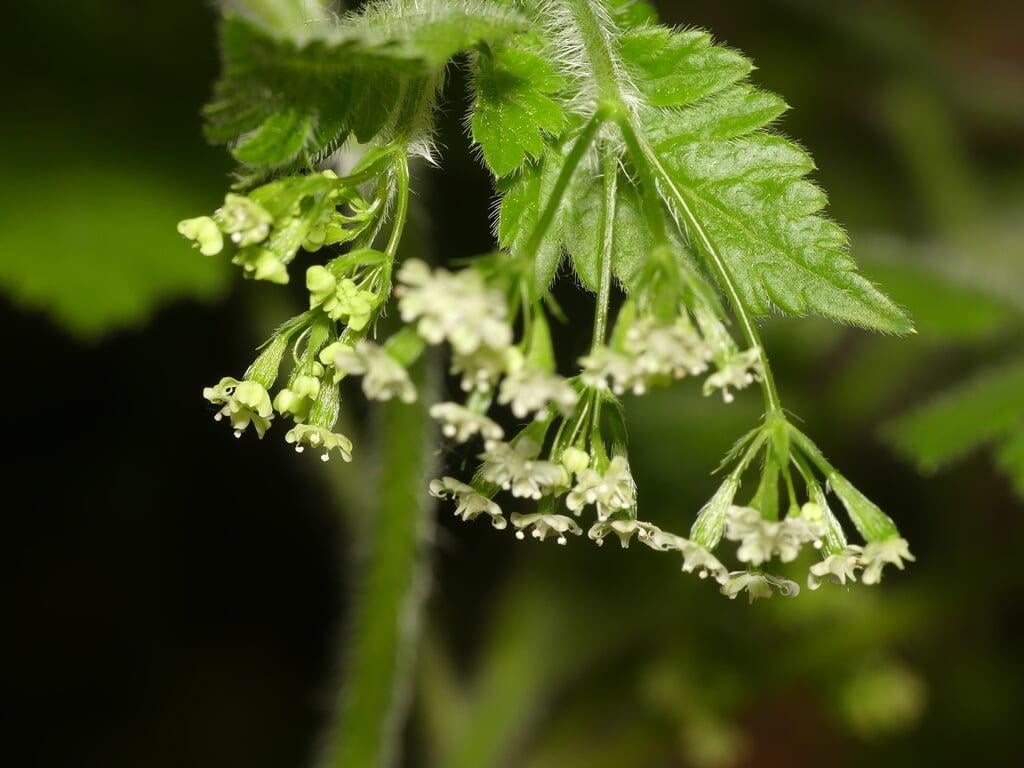Osmorhiza claytonii
D0wny sweet cicely Description:
Osmorhiza claytonii, commonly known as Clayton's sweetroot or Downy sweet cicely, is a perennial herbaceous plant that belongs to the Apiaceae family. It is native to North America and can be found in the eastern United States, from the Great Lakes region to the southeastern coastal plain.
Downy sweet cicely grows up to 1 meter tall and has a slender, hairy stem with pinnately compound leaves that are 15-25 cm long. The plant produces small, white, and inconspicuous flowers that grow in umbels at the end of the stems. The flowers bloom from late spring to early summer and are followed by elongated, ribbed fruits that contain tiny seeds.
The roots of Downy sweet cicely are highly fragrant and have a sweet, anise-like scent. They are edible and have historically been used in traditional medicine for their medicinal properties, such as treating digestive problems and respiratory issues.
Overall, Osmorhiza claytonii is a beautiful and aromatic plant that is an important part of North American flora.
Native Range:
Downy sweet cicely is found natively in the Midwest and Northeastern United States. Its range does extend as far south as Georgia and as far west as the Dakotas.
Standard Plant Information:
Plant Height: 1' - 3'
Bloom Time: May - June
Preferred Habitat: Does well in part shade to shade and is often found in thickets and woods.
Sowing:
For most homeowners, the best option is to scatter seed on the ground by hand broadcasting at a minimum of 16-64 pls ounces per acre. For even coverage, we recommend that you broadcast seed in perpendicular rows across the site to ensure even coverage.
You’ll want to broadcast any grass seed first, which will get raked into the soil lightly. Next, it is ideal to mulch the area lightly with either a clean (no seed) straw or preferably with our native Little Bluestem straw, sold at our retail garden centers. After a light mulching is complete, now it’s time to broadcast your native wildflower seeds, which should not be raked into the soil. A good rain or watering is sufficient to cover the seed.
Planting:
Simply dig a hole in the soil slightly larger than the plant’s roots. Ensure that the soil line of the plant is maintained during the transfer (i.e. the plant should be at the same level with the ground as it was in the pot). Pack any loose dirt back around the plant and make sure you water it well the same day to ensure it has the best chance of survival.








